Original link: https://www.ifanr.com/app/1526569
It’s gone again.
Less than half a year later, the Xiaomi mobile phone was updated again.
Looking back a few months ago, the marriage between Xiaomi and Leica can be said to be big news in the consumer electronics circle.
What is even more gratifying is that in this cooperation, Xiaomi has achieved an ideal win-win situation, and both Xiaomi and Leica have achieved leaps and bounds at multiple levels.
Ever since, we logically want to see better things on the new Xiaomi machine.
With such expectations, I started getting along with Mi 13.
Not only benchmarking, but also wanting to be better
The first thing that cannot be avoided is its appearance. Xiaomi official Weibo has been warming up these days. To be honest, there is no much suspense about its appearance. Xiaomi himself gave three key words for this design: light and capable. and order.
These three key words sum it up very well.
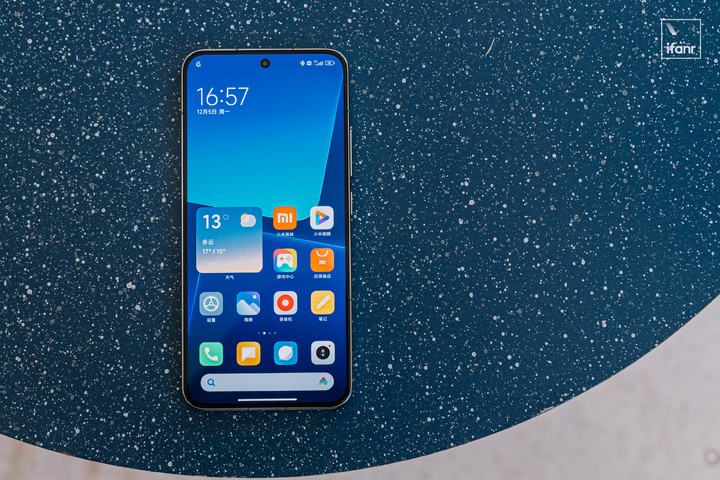
The thickness of the Xiaomi Mi 13 is 7.98mm, and the weight is controlled within 200 grams, more specifically 189 grams. The lightness must have been achieved.
Followed by ability and order, these two points are placed at the same height of consideration, and the two complement each other. Therefore, Mi 13 discards all the complicated elements that will make the main body of the design blurred, and the lines are simplified: the straight border + straight screen is the best evidence.
Of course, to take care of the grip, the front and back sides are curved, which solves the problem of the straight board.
Aluminum middle frame, good-looking and durable.
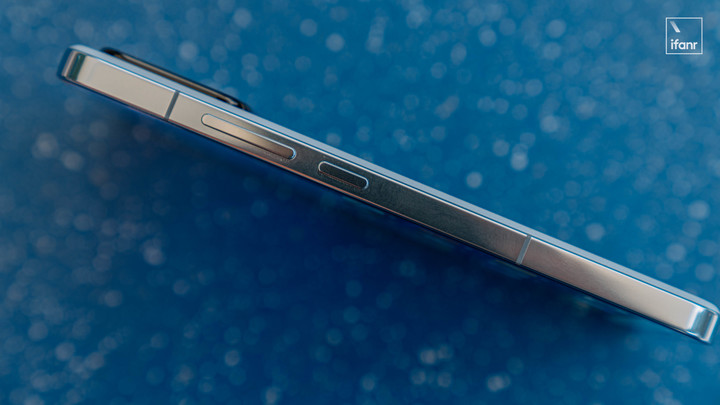
The fuselage buttons are uniformly arranged on the right side. When holding it, one finger can control the volume increase and decrease and lock the screen. The design and interaction are capable.
This machine is in the distant mountain blue color, the back cover is made of nano-leather technology, and the large black rear camera module hides the three cameras, and even the LEICA logo looks low-key.
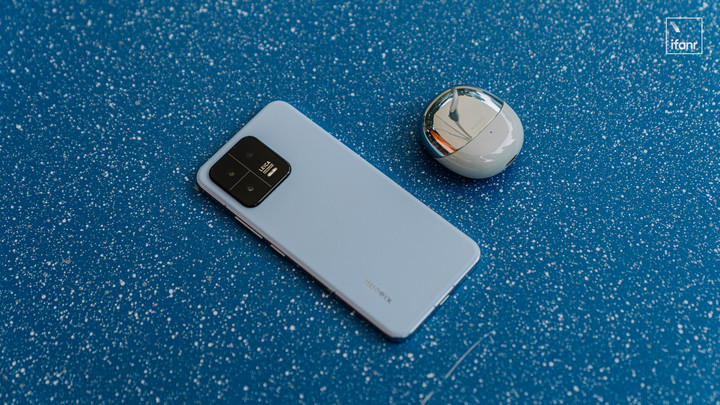
In addition, there is only one “XIAOMI” LOGO logo left on the back cover, which continues Xiaomi’s consistent simple style on the back.
The key lies in the back line. The slight ups and downs form a natural and comfortable arc at the intersection of the back cover and the middle frame, which reduces the hand feeling caused by the straight edge. With a moderate width of 71.5mm, even users with small hands can find a comfortable fit. Grip support while retaining the possibility of one-handed operation.
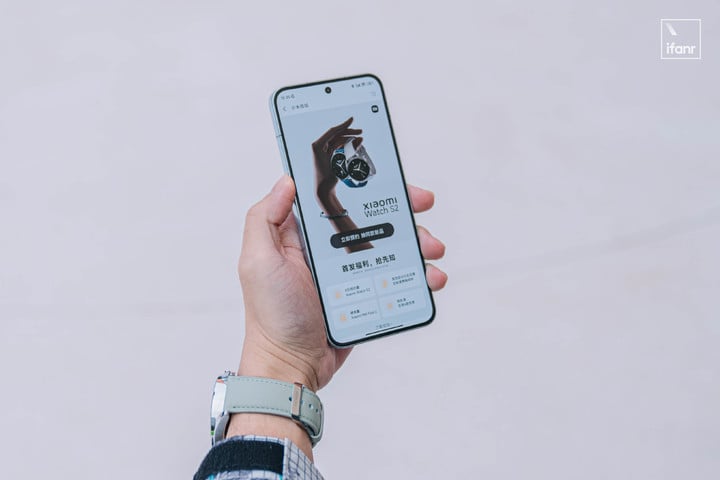
As for the material used for the back, Xiaomi also has a way. Xiaomi even used this as a selling point, claiming that the back cover of Mi 13 can be used as a sticky note. Users can paint and draw with a marker pen on the back, and wipe it clean with a wet paper towel afterwards.
Although as a selling point, this promotional caliber is confusing, but at least it proves that the Xiaomi 13nm leather back cover is dirt-resistant and easy to clean, and its durability will be higher than the previous plain leather material.
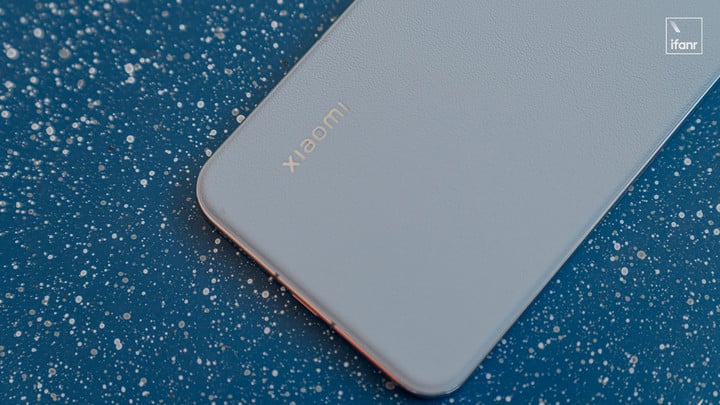
The use of leather materials improves the grip feeling and reduces the risk of hand slipping.
We just talked about design, and it was difficult for us to ignore the elephant in the room. When my colleagues passed by my work station, they would ask a similar question: “Is this an iPhone?”
Of course it is not an iPhone, but Mi 13 has its own core purpose: a comfortable feel. In order to achieve this goal, Xiaomi added a “curved back” treatment to the straight-sided middle frame.
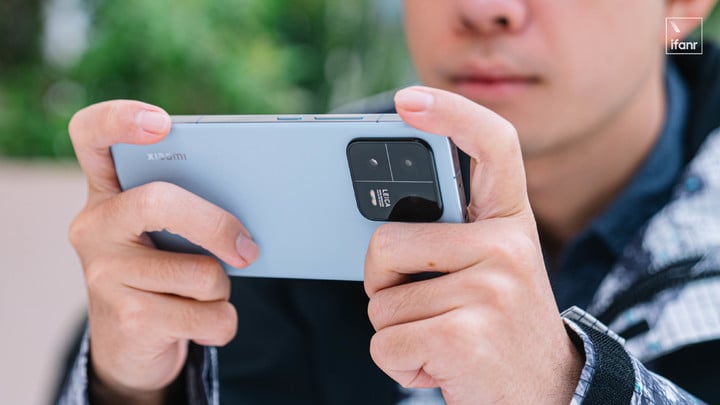
The change is small, but it also has a big effect.
So even though it looks like an iPhone, it still has a soul of its own. My colleagues, after asking “Is this an iPhone?”, usually followed up with another comment: “It feels good in the hand.”
Because of this, I personally think that the design of Mi 13 is successful: light, capable and orderly. It does it all.
Razor project, cut to MIUI
In terms of appearance design, Xiaomi demonstrated the acquired minimalist design ability, so they decided to apply this skill to MIUI, put the slogan of “ultra-pure system” on MIUI 14, and launched the “razor project”, Trying to achieve a counterattack at the Xiaomi system level.
First of all, Xiaomi has cut off a large number of built-in native applications, and only retains eight basic functions (phone, SMS, contacts, camera, etc.), which is the first step to reduce the burden and create a refreshing feeling at first glance.
If necessary, users can download these first-party applications from the application store by themselves, and the choice is left to the user.
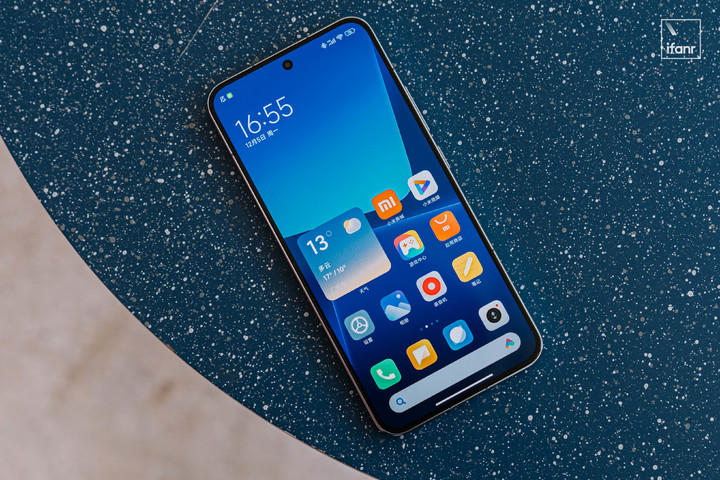
However, for some groups of people, this may weaken the convenience of Xiaomi mobile phones being turned on and used. I am referring to older parental users who can use apps that can be used when they turn on the phone. Finding it is tantamount to adding a barrier to use.
In the future, Xiaomi may wish to set up a native application area in the application store and provide a one-click installation function to further reduce the barriers to use for novice users.
Having said that, I think most people prefer to see a clean system, and this step taken by MIUI 14 still has more advantages than disadvantages.
The second step of Project Razor is to cut unnecessary system firmware.
Xiaomi claims that the system firmware of MIUI 14 is 23% smaller than that of the previous generation. This operation, together with reducing the memory occupied by the system itself, further reduces the burden on the system.
But this kind of improvement is not easy to be perceived. People seem to care more about whether the new system has an eye-catching design or new features worth playing. Necessary condition for praise. Under this kind of contradiction, Xiaomi chooses to use both hands, not only to vigorously adjust the internal, but also to provide users with the most intuitive changes in terms of external beauty.
Last year, Xiaomi spent a lot of effort on the functions of widgets, which are elements that users see every day. Intuitive and close at hand.
Xiaomi chooses to start in this area, and it will get twice the result with half the effort. The new icons can be adjusted in size, and the desktop style becomes extremely rich and interesting. Coupled with the new flower pet ornaments, users will definitely feel the specialness of MIUI 14 from the moment they pick up the phone.
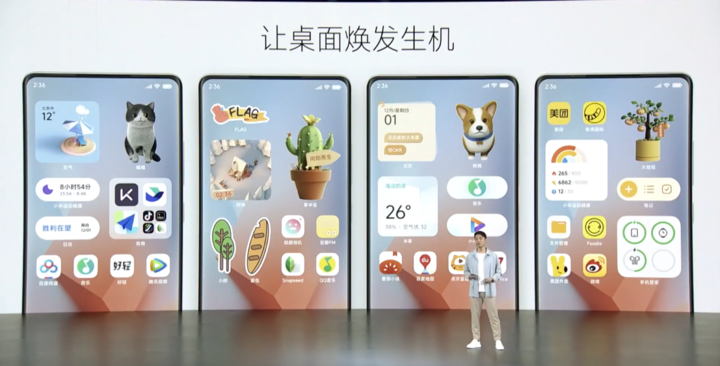
▲When the press conference showed this new feature, a small bright spot appeared
The rest is the upgrade and improvement of some detailed functions, such as “laptop and tablet sharing keyboard and mouse” functions, which will make Xiaomi ecological users smile; Features that everyone can benefit from.
Easy to use and easier to use, this is my impression of MIUI 14.
Hard power, Mi 13 has done well enough
After writing this, we only started to talk about the “hard physique” of Mi 13.
After a delay, Xiaomi missed the first qualification of Snapdragon 8 Gen2, but what remains unchanged is that it is still equipped with Qualcomm’s latest flagship chip, and Xiaomi Mi 13 is no exception.
The new TSMC 4nm process technology, the new “1+4+3” core architecture, and the new Adreno GPU core form the new flagship mobile platform of Qualcomm Snapdragon.
Naturally, I also know that everyone must be full of curiosity about it. Last Thursday, we announced the “Yuan Shen running score” of Mi 13 in advance. In the full high-definition mode (resolution 1920×864), the frame rate is basically close to the ceiling of 60fps.
The frame rate graph fluctuated slightly, but it was not noticeable during the game. Qualcomm Snapdragon finally passed this “running game”.
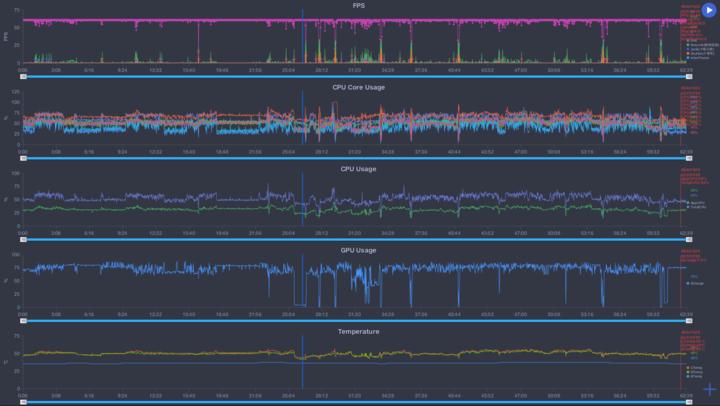
▲Several times of obvious frame rate drops, appearing in the task loading link, not “dropped frames”
Whether it is the actual experience of playing or judging from the data, “Yuanshin” is no longer a difficult bone for Qualcomm’s flagship mobile chip. Mihayou can even consider contributing a higher level to mobile game players. The picture quality also makes it difficult for the next generation of mobile chips.
At a room temperature of 16 degrees in Guangzhou, I held Mi 13 in my hand, and I only felt warm. I didn’t resist this feeling, and even wanted to play for a while.
As for energy efficiency, playing “Yuan Shen” for an hour consumes nearly 20% of the power of Mi 13, and the total battery capacity of 4500mAh can support up to 6 hours. Of course, this is an extreme endurance test for mobile phones.
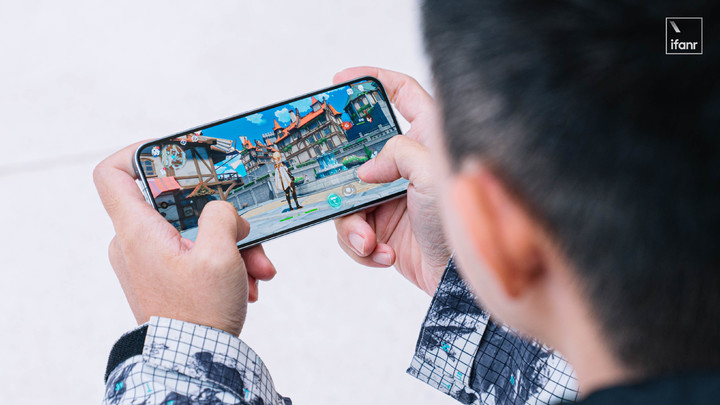
I use it as the main machine. I wake up on the weekend and use 67W fast charging to quickly recharge it. When I go out with a full charge, I don’t play games during the period. I walk around and take pictures. With the above power, battery life anxiety is no longer there, and the 67W fast charge can help the Mi 13 revive with full blood in 40 minutes, and I no longer feel anxious about the power.
I use Mi 13 every day, and the longest facing is the 6.36-inch full HD screen on the front, which uses a new E6 luminous material, with a global maximum brightness of 1200nit and a peak brightness of 1900nit. The side plus the center digging hole, the visual experience is excellent.

More importantly, Mi 13 has such a high screen brightness that it is easy to see the content even under strong outdoor light. During the game, the brightness of the screen will not be reduced, all thanks to the excellent power consumption between the screen and the chip.
With the joint efforts of the upstream and downstream, millet, which is used to stacking materials, finally took off.
Leica certification is also the highlight of Mi 13
Hardware performance is only part of the capabilities of Snapdragon 8 Gen 2. As Qualcomm continues to increase its investment in imaging, this chip has built a higher computational photography foundation for mobile photography.
This may also be the confidence that Xiaomi dared to put “Leica image” on the whole series.
The Leica image of Mi 13 is composed of multiple parts, but the most prominent is the Leica style and master lens package.
Leica style can be understood as a whole set of Leica imaging orientation, a set of styles that come with the film, and you can get it immediately. This time, there are still two styles: “Leica Classic” and “Leica Vivid”. Those with high saturation.
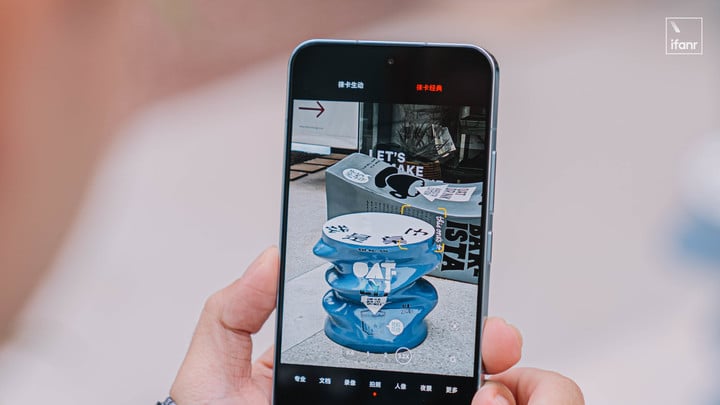
Two sets of styles, suitable for showing different photography moods.
I am used to using “Leica Vivid” every day, which is more suitable for daily sharing. If you want to add specific emotions, you can use the Leica filter in the editing function that comes with the album for processing.

The so-called master lens package refers to the four focal lengths of 35mm, 50mm, 75mm, and 90mm on Mi 13. Click it to view the view at the corresponding focal length.
And these focal lengths correspond to different needs when taking portraits, but when I use it, it is always difficult to get a perfect portrait with a blurred background, so I choose to give up and use the main camera instead.
There are three rear cameras, 50-megapixel main camera, 12-megapixel ultra-wide-angle and 10-megapixel 3.2x telephoto.
It covers all focal lengths, and can basically deal with scenes such as portraits, landscapes, and macros.
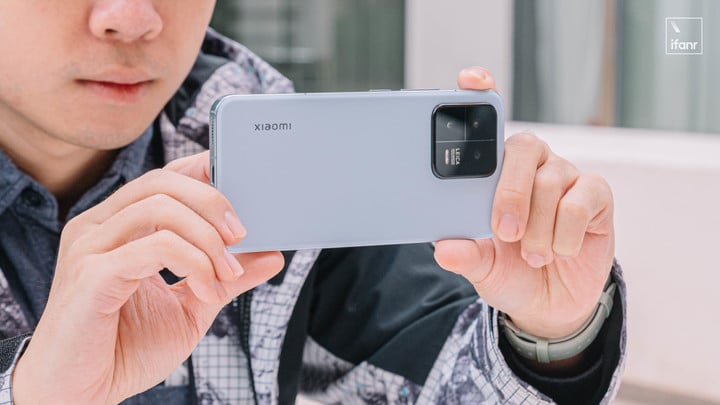
The special ones are 23mm and 46mm. They are both taken by the main lens. When shooting with the 23mm focal length, the phone will output a 12.5 million-pixel photo in the four-in-one pixel mode; when switching to 46mm, it will directly output 50 million pixels, and finally take the central 12.5 million pixels to output a double-zoomed photo.
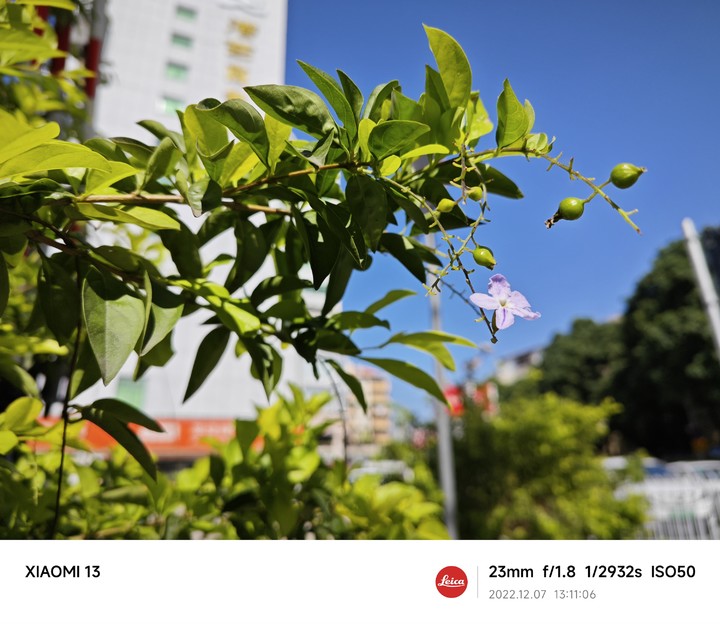

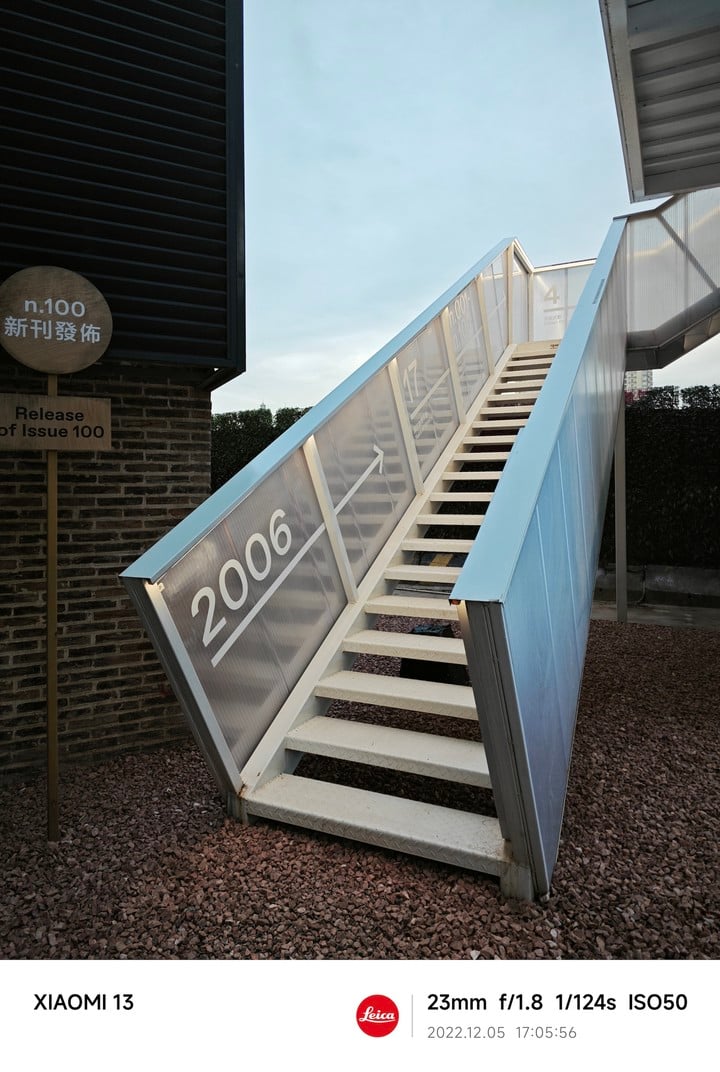
The 75mm uses 3.2x telephoto shooting, because it has OIS optical image stabilization, so there is no need to worry too much about its film production rate, as long as it is not in extremely dark conditions, 75mm can produce films smoothly.
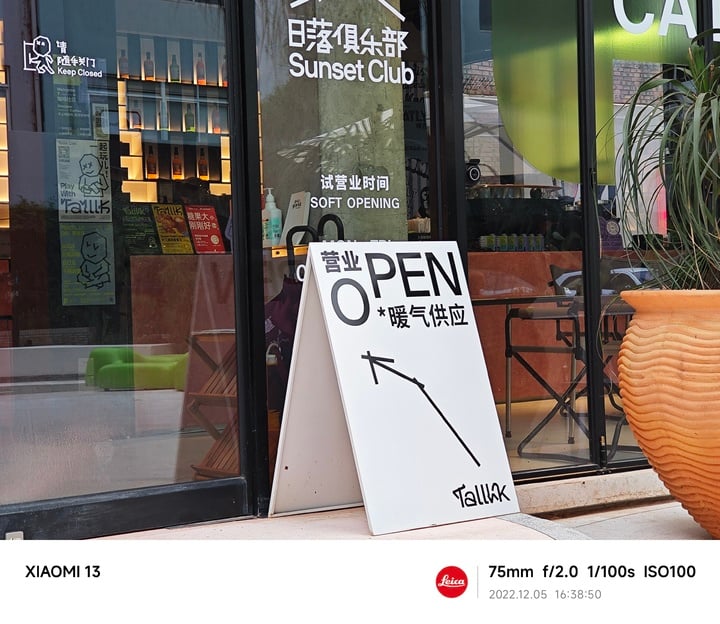 As mentioned at the beginning, the previous generation of Mi 12S series helped Xiaomi establish its own reputation in the field of mobile imaging. Coupled with the image processing capabilities of Snapdragon 8 Gen 2, it is difficult for Mi 13 to lose.
As mentioned at the beginning, the previous generation of Mi 12S series helped Xiaomi establish its own reputation in the field of mobile imaging. Coupled with the image processing capabilities of Snapdragon 8 Gen 2, it is difficult for Mi 13 to lose.

▲Proactive selfie is also very good
In fact, its ability to produce films is really reassuring.

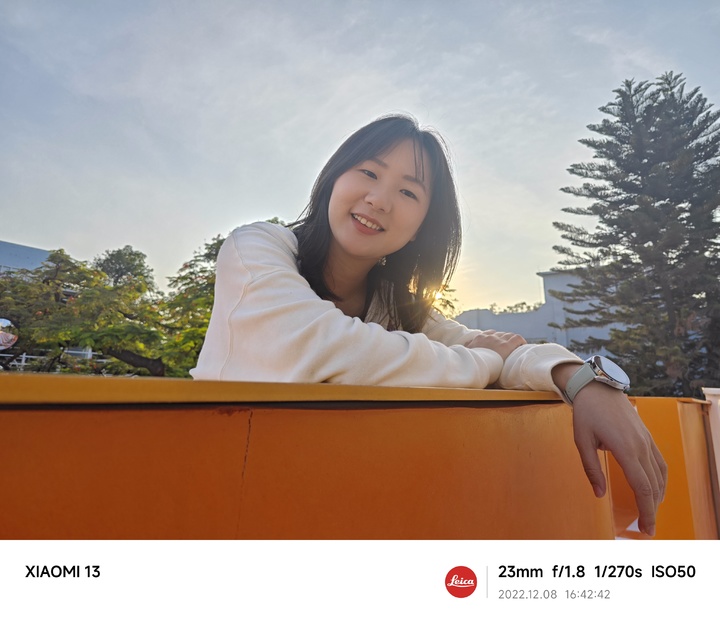
The night scene image performance of Mi 13 is what I am more curious about. After all, in the daytime state, the current flagship mobile phone is not difficult to deal with. So I asked my colleague who is a great photographer to take a photo of Mi 13 in Guangzhou under the night. The following is his experience:
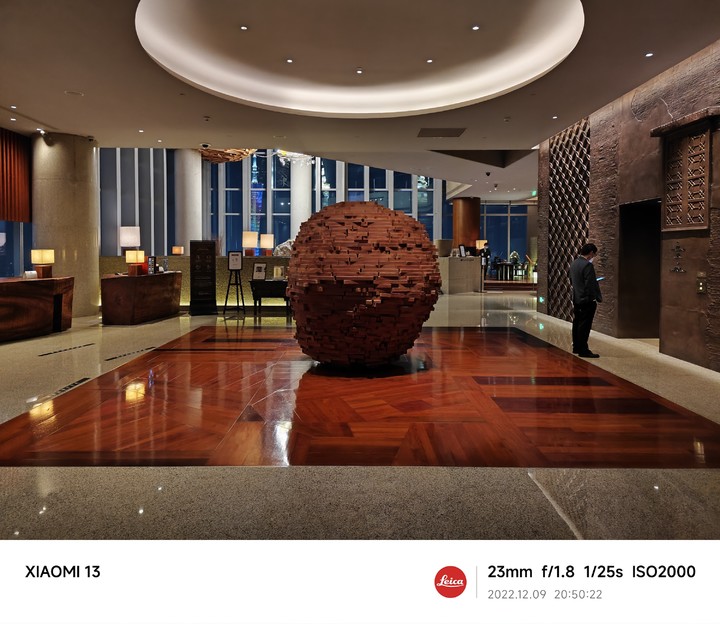
In relatively well-lit nighttime outdoors and in an environment where the light is not too dark, the shooting performance of Mi 13 is not bad. On the premise of not clicking on a clear focus point, the picture presented by the mobile phone algorithm will be brighter than the real scene.

High-light positions such as road lights will be processed, and the overall light ratio of the picture will be adjusted at the same time, so that the pictures taken at night will be relatively bright, and at the same time, the highlights and dark parts will be as detailed as possible.
However, the current version of Mi 13 still has some problems with heavy HDR traces. When the light ratio is lowered, the picture will be relatively grayish, which may need to be adjusted later.
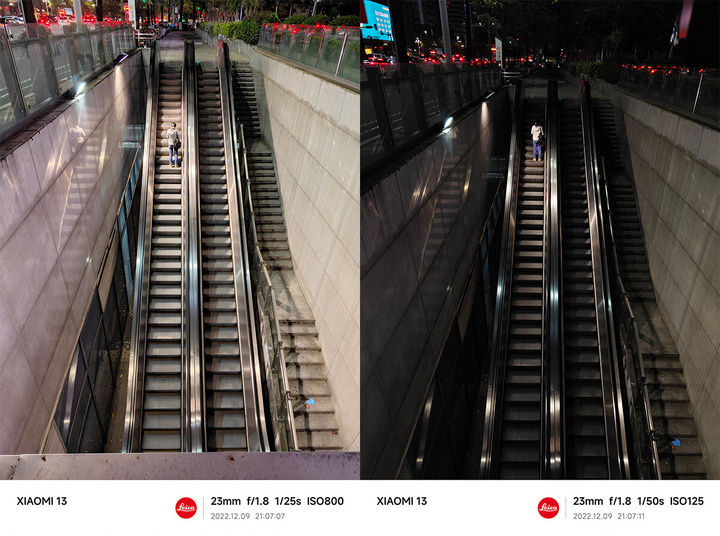
In the default environment, Mi 13 shooting will try to make the picture as bright as possible, and all the dark parts will be pushed up. This is also a common practice in mobile phone processing at this stage. After all, so far, AI still cannot judge what kind of light and dark positions people want to keep in which environment.
Of course, users can adjust the picture by adjusting the exposure compensation after focusing. After the adjustment is completed, you can quickly lock it with a long press. The response of Mi 13 here is still quite fast.
It’s just that in some environments with the existing firmware, Mi 13 will reduce the exposure in the early stage, but the phone will bring the exposure back through post-processing. Although after boosting and changing the light ratio of the photo, such an operation still looks a bit strange.
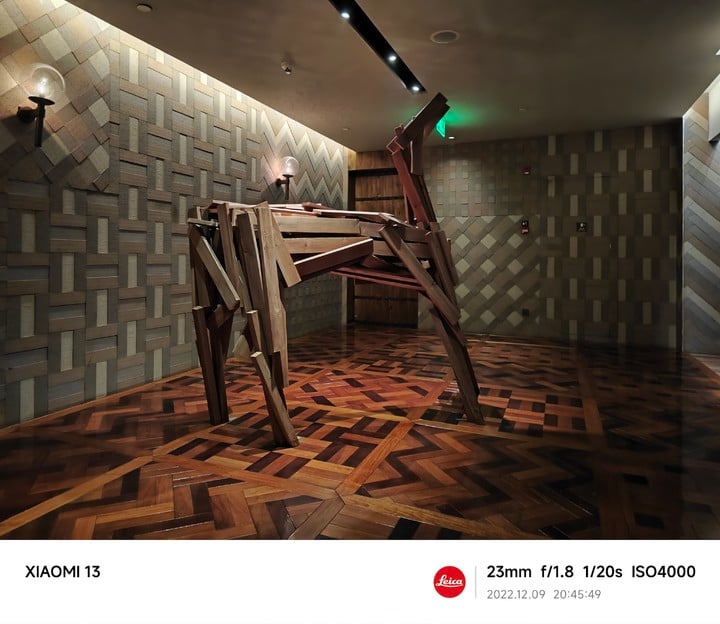
In a darker environment, the performance of Mi 13 will be more obvious.
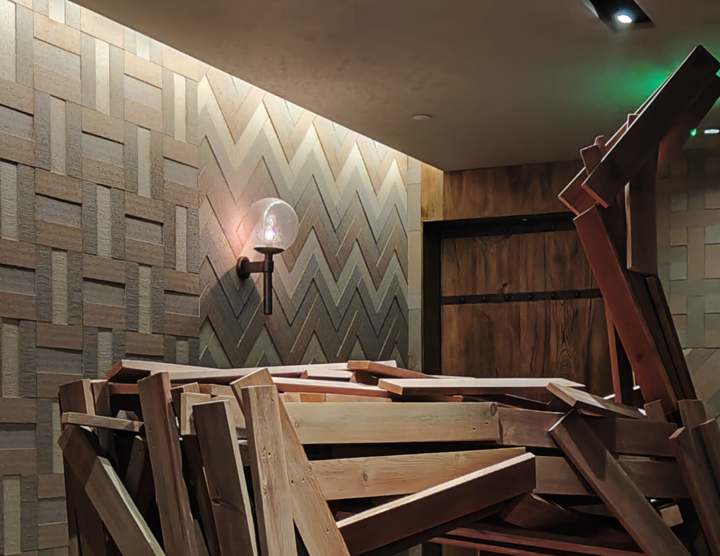
Press the shutter to image, you can feel the brightness of the picture is significantly improved, the noise will not be too obvious after zooming in, and the picture is relatively clean. The details of the tiles on the wall are basically preserved, and the feeling of smearing is not too obvious.
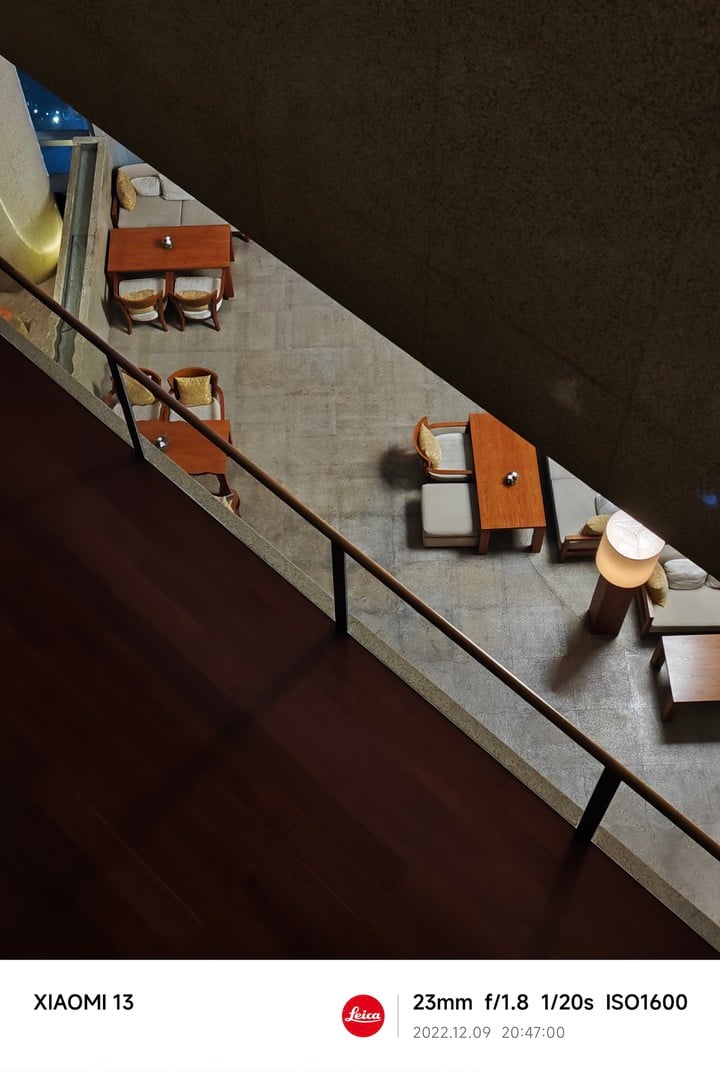
When shooting here, the downstairs table will be much darker than the picture, and the boardwalk and the upper wall are almost completely dark. With 2x shooting in such a dark environment, the picture of Mi 13 can also be kept clean.
Although the bottom of the ground floor and the texture of the slate next to the aisle have been blurred when zooming in to see the details, considering the ambient brightness and 2x cropped shooting, the performance of Mi 13 is still good.
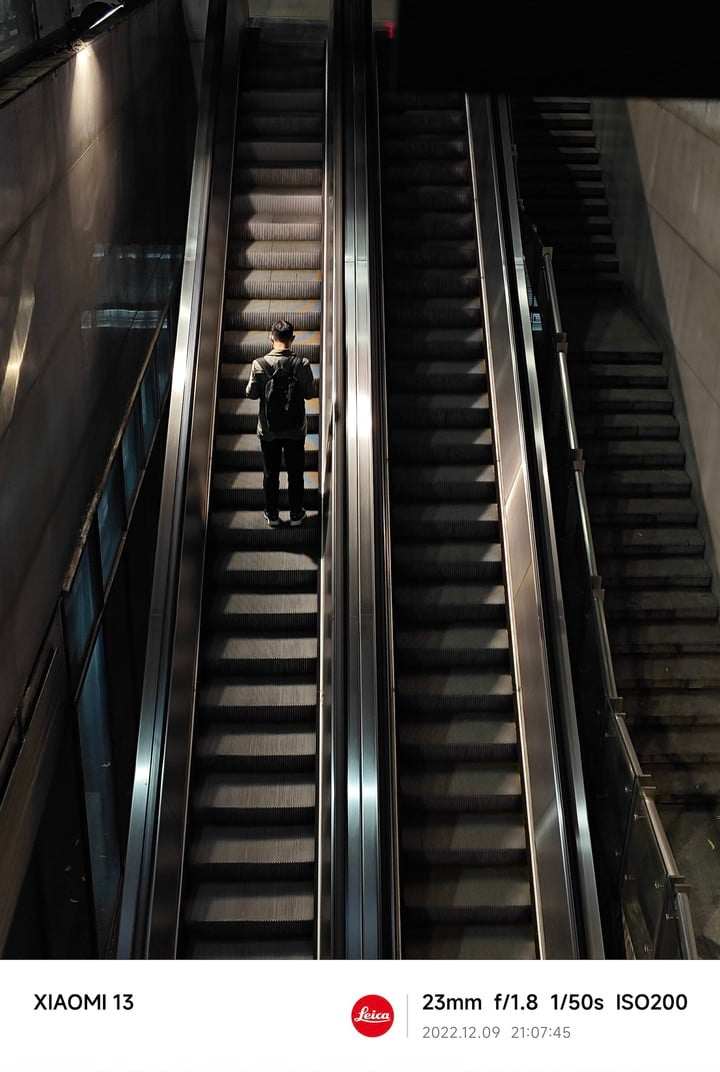
In an outdoor environment that is not too extreme, the performance of Mi 13 shooting in 2x mode is not bad. The overall performance and details of the picture are guaranteed, and there is no noise outbreak in the dark part. In addition, the main camera has optical image stabilization, so it is not a big problem to slow the shutter in the same scene.
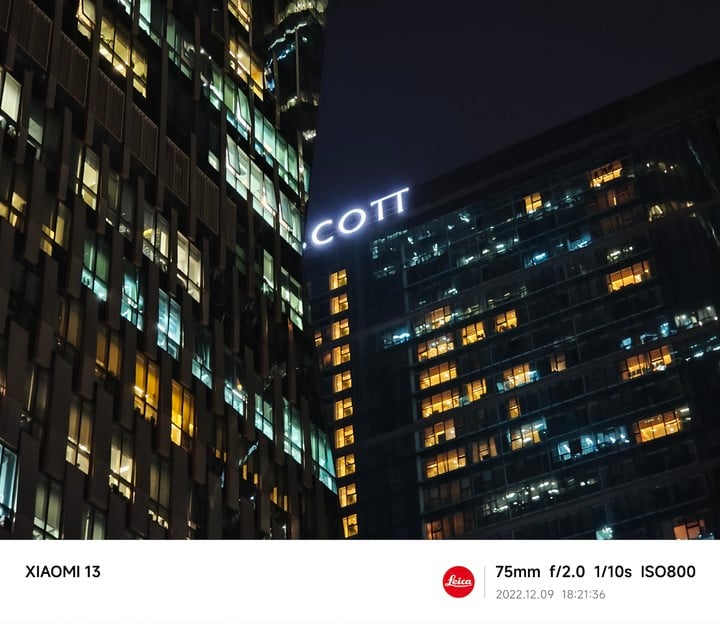
Likewise, switching to a 75mm telephoto for handheld shooting is fairly stable. The success rate of hand-held shooting with the shutter down to 1/10s is quite high, and with the details and exposure control of the overall screen of Mi 13, it is okay to switch to 75mm telephoto for shooting at night.
Speaking of the shutter, let me mention one more point. The exposure of Mi 13 in low-light environments will be relatively aggressive, and the shutter will be lowered as much as possible to increase the amount of light entering.
Although the picture can remain stable, there will still be motion blur when shooting moving objects. Users who want to shoot such subjects at night need to pay attention.
Digital series accessories, quite satisfactory
The Xiaomi Buds 4 and Xiaomi Watch S2 were also launched at the same time as the Mi 13 series.
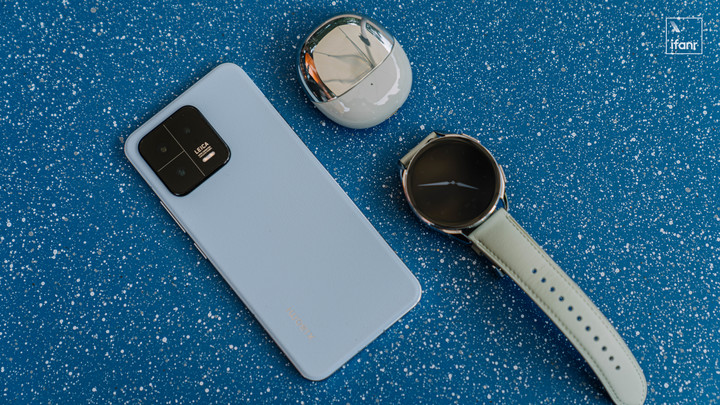
Xiaomi Buds 4 follows the design of the “space capsule” earphone box, and the overall shape is restrained and shrunk, like a green pebble.
It’s just that the lid is not easy to open.
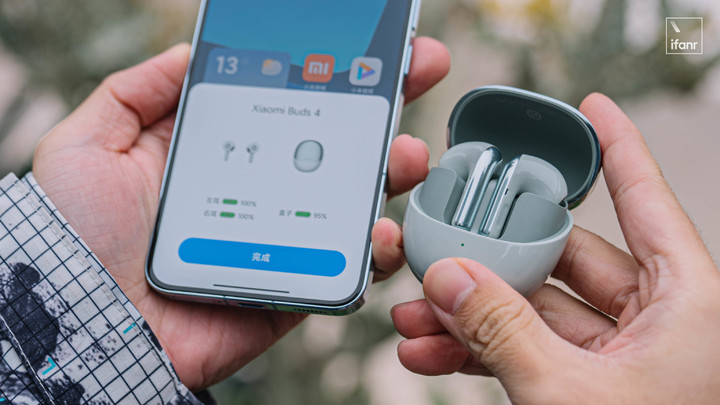
The headphone body adopts a semi-in-ear design, which lacks isolation measures for external sounds, so its noise reduction function is closer to noise reduction than noise cancellation.
In noisy environments such as subways, its noise reduction is a bit powerless. But half-in-ear also has the benefits of half-in-ear. Compared with the in-ear type, the wearing comfort of xiaomi Buds 4 is more than a little bit better, and the universality is also higher.
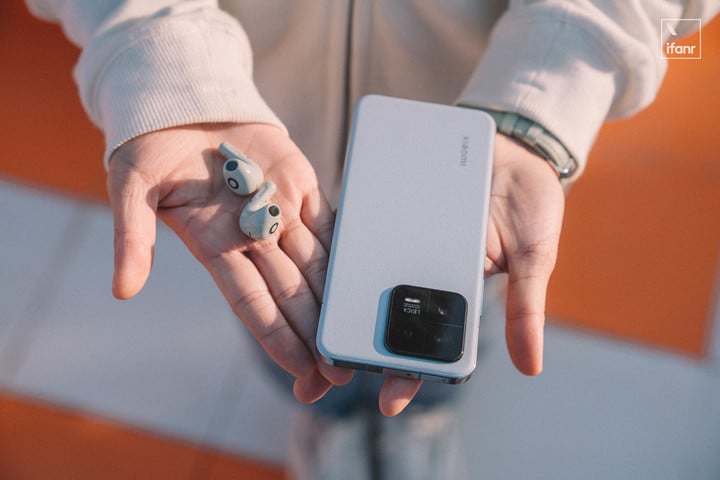
The price is 699 yuan.
The xiaomi Watch S2 retains the general appearance design of the S1, but the buttons on the right are replaced with flat ones, which is a change made to add the body composition analysis function.
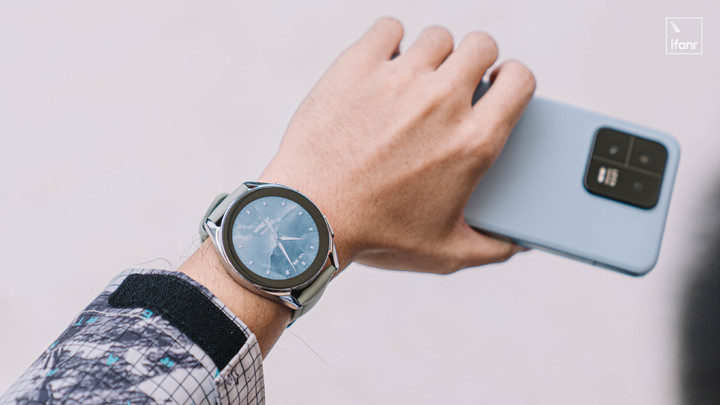
Similar to the Samsung Galaxy Watch 5, the xiaomi Watch S2 can now also help the wearer measure body fat, skeletal muscle content, body water and other indicators. This is also a function that I have always hoped that the Apple Watch can use. Very practical.
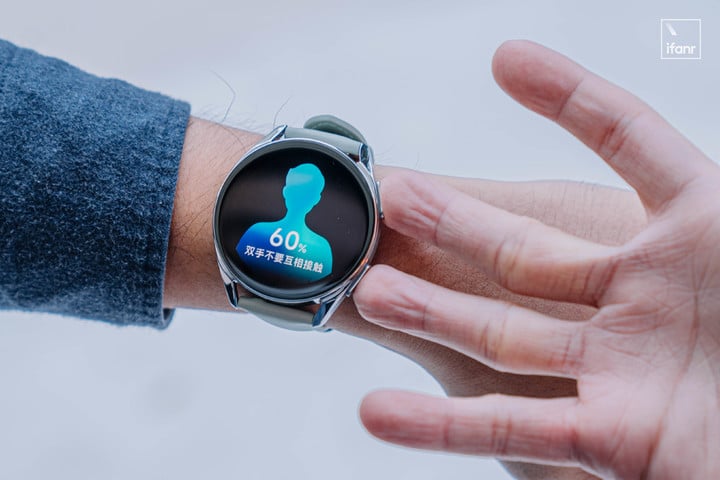
However, what puzzles me is that the charging method of xiaomi Watch S2 has “degenerated” from the wireless magnetic attraction of S1 to relying on contact charging, which means that it is necessary to bring an extra watch charger for long-distance travel.
The price starts at 999 yuan (42mm).
Familiar formula of Xiaomi digital series
The above is the whole picture of the new Xiaomi digital series suit.
On the road of Xiaomi’s high-end efforts, there are Pro and Ultra high-end models to accompany it, but the digital series is the cornerstone of Xiaomi. Without the digital series, there would be no Xiaomi today.
Fortunately, today’s Mi 13 mobile phones have both performance and a good price. Moreover, with the blessing of Leica certification, the imaging capabilities are compared horizontally with competing products, and there is no fear. It can be regarded as a quite powerful Xiaomi digital model in recent years.
Xiaomi mobile phones are moving towards high-end, and the digital series is also smoothly keeping up with the pace.
@梁梦林 has made great contributions to the video experience content
This article is transferred from: https://www.ifanr.com/app/1526569
This site is only for collection, and the copyright belongs to the original author.